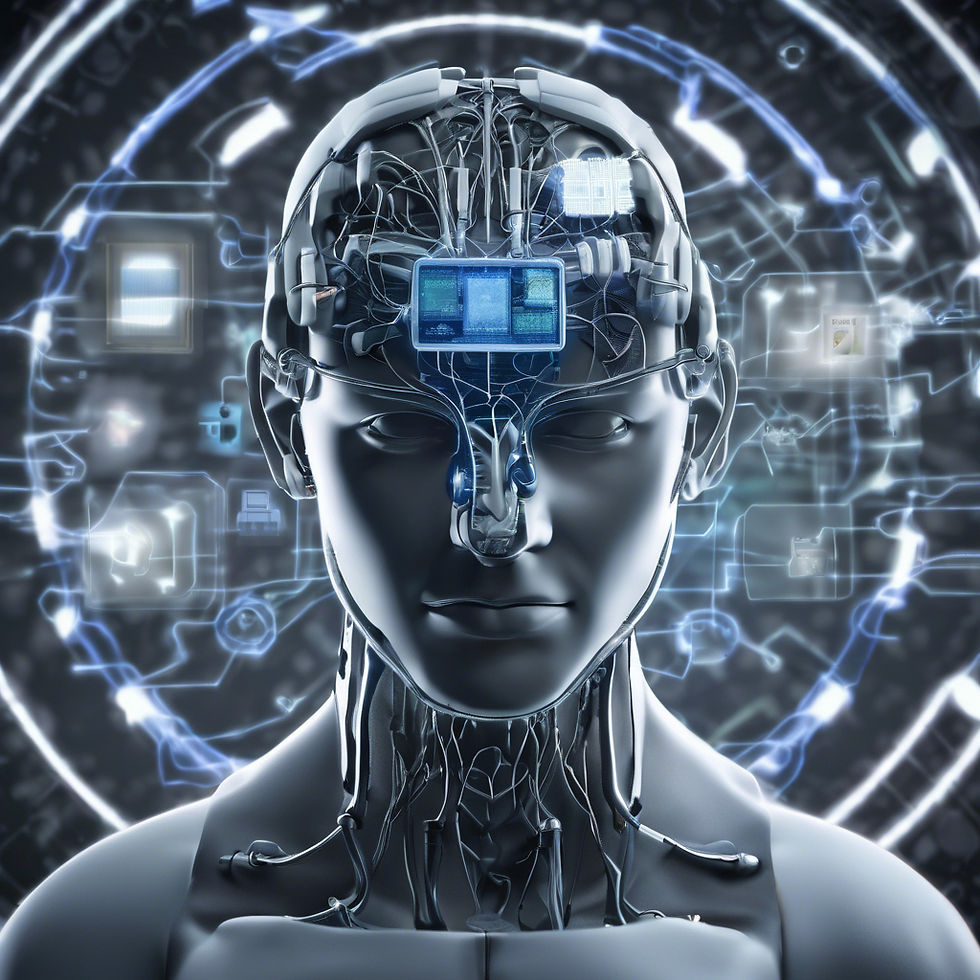Exploring the Possibilities of Enhancing Cognitive Abilities with ARTESEROSTEK O.I: A Look into Brain-Computer Interfaces, Neurostimulation, and More
- Franco Arteseros
- Apr 13
- 4 min read
The human brain is a marvel. It controls our thoughts, emotions, and actions. Often, people think we only use 10% of our brain. However, research shows that nearly every part of the brain plays a role, active throughout our waking and sleeping hours. What if we could boost our brain's capacity? Imagine enhanced problem-solving skills, better memory retention, and new ways of understanding our world. The possibilities are exciting, but we must also consider the challenges. The brain excels at multitasking and energy efficiency, so any enhancements must be carefully balanced.

With this in mind, let's explore the fascinating field of cognitive enhancement, focusing on what ARTESEROSTEK O.I. brings to the table along with various emerging technologies.
Brain-Computer Interfaces (BCIs)
Brain-Computer Interfaces (BCIs) stand out as one of the most revolutionary advancements in cognitive enhancement technology. These devices enable direct communication between the brain and external systems, offering real-time monitoring of brain activity. Imagine being able to boost your focus and memory instantly while studying or working.

A study from 2021 demonstrated that participants using a BCI system showed a 30% improvement in attention span during tasks. This technology isn't just for entertainment; it holds the potential to transform learning and creativity. For instance, individuals recovering from strokes can use BCIs to help regain control over their movements and improve cognitive functions.

Neurostimulation Techniques
Neurostimulation techniques, such as transcranial magnetic stimulation (TMS) and transcranial direct current stimulation (tDCS), offer exciting possibilities for enhancing cognitive functions. These methods target specific brain areas to improve processes like learning and memory.
Research published in 2020 revealed that participants using TMS experienced up to a 25% increase in information retention. This non-invasive technique modulates brain activity without surgery, making it an appealing option for anyone wanting to boost cognitive performance.

As promising as neurostimulation techniques are, understanding their risks is important. Using these methods responsibly can ensure they benefit people without creating gaps in access or understanding.
Neurofeedback
Neurofeedback enables individuals to learn self-regulate their brain activity by using continuous feedback. This technique takes advantage of neuroplasticity, the brain's ability to adapt and change.

Consider students who struggle to focus during study sessions. Through neurofeedback, they could train their brains to enhance attention, leading to improved academic performance. A study showed that students participating in neurofeedback programs saw a 40% increase in concentration levels.
However, as we embrace these technologies, we must also consider their ethical implications. It is essential that we deploy neurofeedback in ways that support, rather than hinder, individual growth and well-being.

Digital Tools and Apps
Digital tools have become essential for enhancing cognitive functions. Smartphones today support numerous applications designed to boost skills in organization, learning, and memory. From memory challenges to cognitive training programs, these tools offer straightforward ways to foster brain activity.

Digital tools’ main advantage is accessibility. With just a smartphone, anyone can enhance cognitive abilities. A survey found that 78% of users reported noticeable improvements in focus and retention after regular use of cognitive training apps. This democratization of cognitive enhancement makes growth accessible to many.
The Role of Artificial Intelligence
As artificial intelligence (AI) technology evolves, it plays a growing role in cognitive enhancement. AI-driven systems can analyze learning patterns and personalize experiences. This individual approach can significantly boost learning effectiveness.

For instance, AI can identify areas of struggle in students and provide tailored resources to address these challenges. Reports show a 35% improvement in understanding among students who utilized AI-based learning tools. These personalized strategies foster deeper knowledge retention and skill acquisition.
Looking Ahead
Examining cognitive enhancement through ARTESEROSTEK O.I. reveals exciting futures for human potential. Technologies like BCIs, neurostimulation, neurofeedback, digital tools, and AI present vast possibilities. However, we must also tackle ethical concerns to ensure these tools uplift society without widening gaps between those with access and those without.

As we approach new heights with these technologies, curiosity must be balanced with responsibility. By doing so, we can create a future where enhanced cognitive abilities are available to all, leading to a more innovative and creative society. The journey is only beginning—what awaits us in the future?
FRANCO ARTESEROS...








Comments